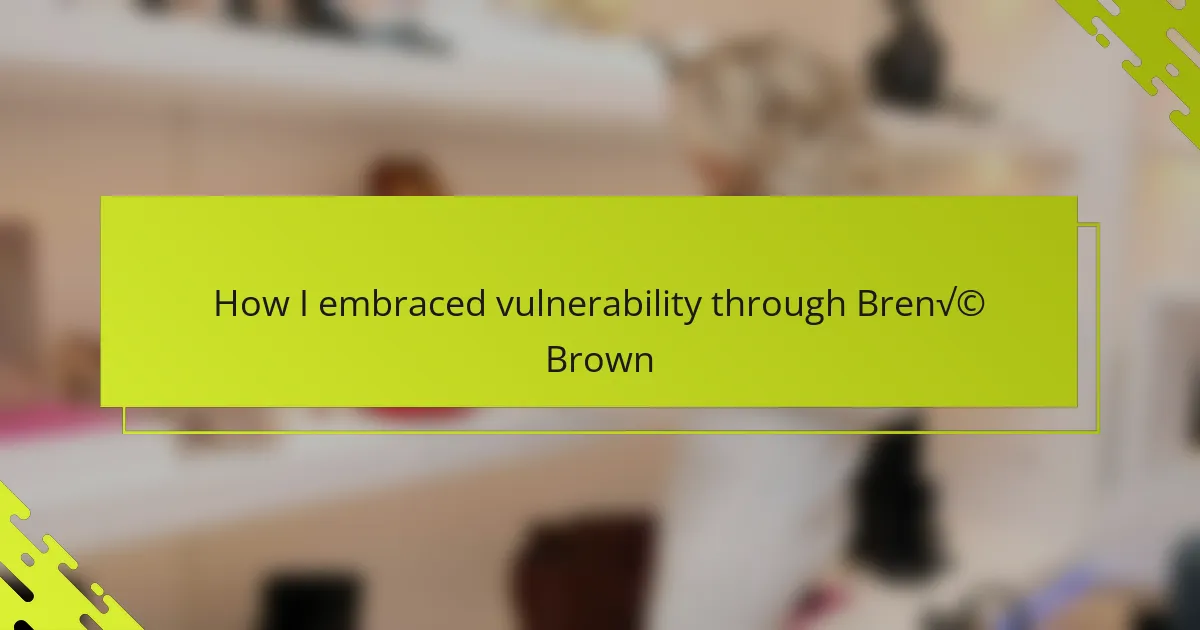Key takeaways
- Vulnerability fosters deep connections and empathy, allowing queer women to build community and claim power through shared experiences.
- Brené Brown’s teachings emphasize vulnerability as a source of courage, urging individuals to embrace discomfort for personal growth.
- Breaking down barriers to vulnerability involves reframing it as an act of courage rather than exposure, which can lead to authentic relationships.
- Applying vulnerability in daily life through small, honest conversations can enhance trust and self-understanding, ultimately nurturing resilience.
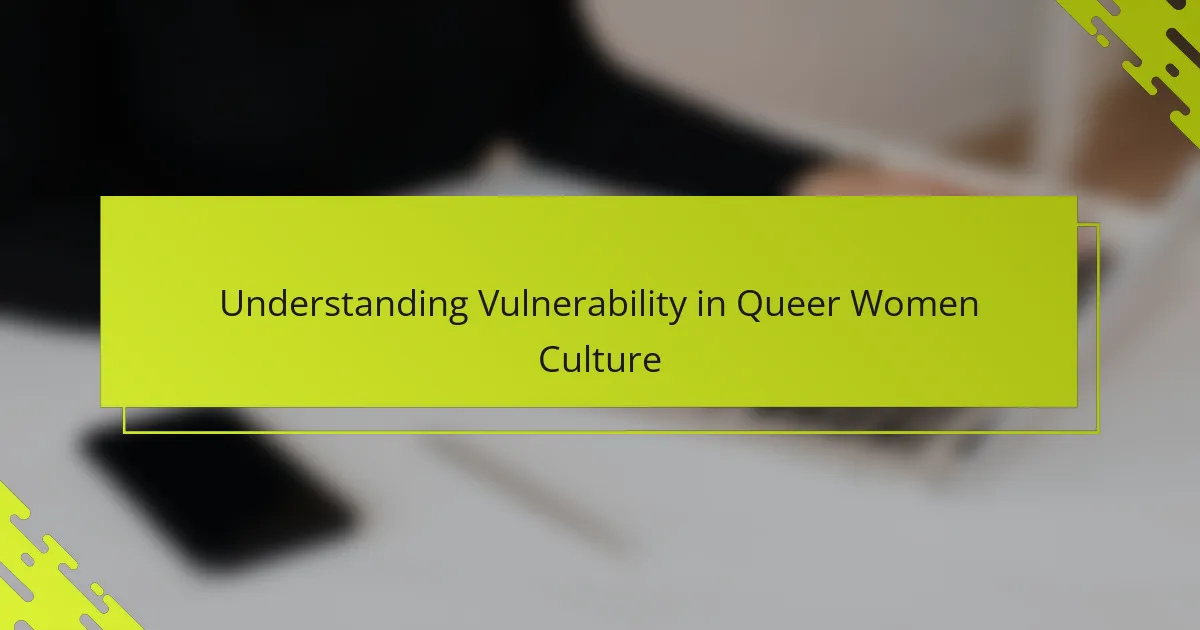
Understanding Vulnerability in Queer Women Culture
Vulnerability in queer women culture often feels like walking a tightrope between authenticity and safety. I’ve noticed how sharing parts of myself—my fears, desires, and uncertainties—can be both freeing and terrifying. Have you ever hesitated to reveal your whole truth, fearing judgment or misunderstanding?
For many of us, vulnerability is a radical act because it means showing up fully in a world that hasn’t always been kind. I’ve found that embracing this openness creates deep connections, fostering empathy and solidarity in ways that silence never could. It’s as if vulnerability becomes a language that we use to rewrite our stories together.
Living in a culture where being “out” intersects with other layers of identity, vulnerability also becomes about navigating those complex spaces. I often ask myself: How can I stay true to my feelings while protecting my heart? This ongoing dance shapes how queer women build community and claim power through shared vulnerability.
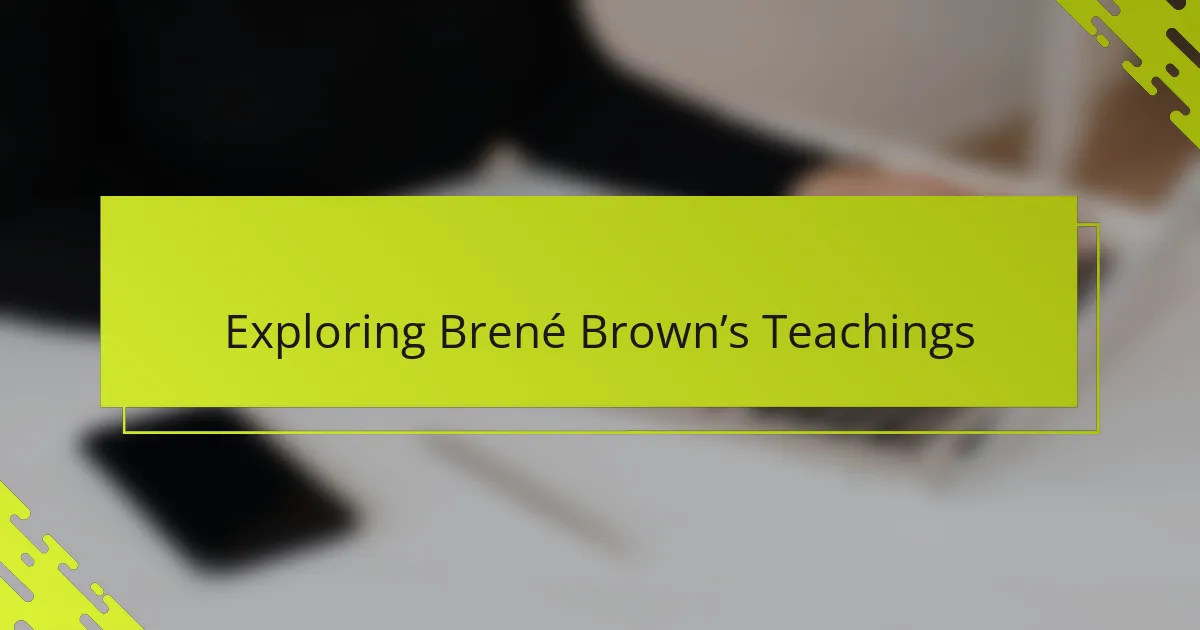
Exploring Brené Brown’s Teachings
Brené Brown’s teachings on vulnerability have been a lighthouse in my journey. She describes vulnerability not as weakness, but as the birthplace of courage and connection. Have you ever thought about vulnerability as the key that unlocks wholehearted living? For me, that shift in perspective was profound.
What stood out most was her emphasis on embracing discomfort instead of fleeing from it. I used to shy away from moments of uncertainty, afraid they exposed my flaws. But Brown taught me that leaning into those moments—welcoming imperfection—actually makes us stronger. It’s a reminder that shame loses its power when we speak honestly about our experiences.
Her research also highlights how vulnerability fosters empathy. When I started sharing my story openly, I noticed how it invited others to do the same, creating a ripple of trust. It made me wonder: how often do we underestimate the healing that comes from simply being seen? Brown’s wisdom pushed me to reimagine vulnerability as a revolutionary act of love and belonging.
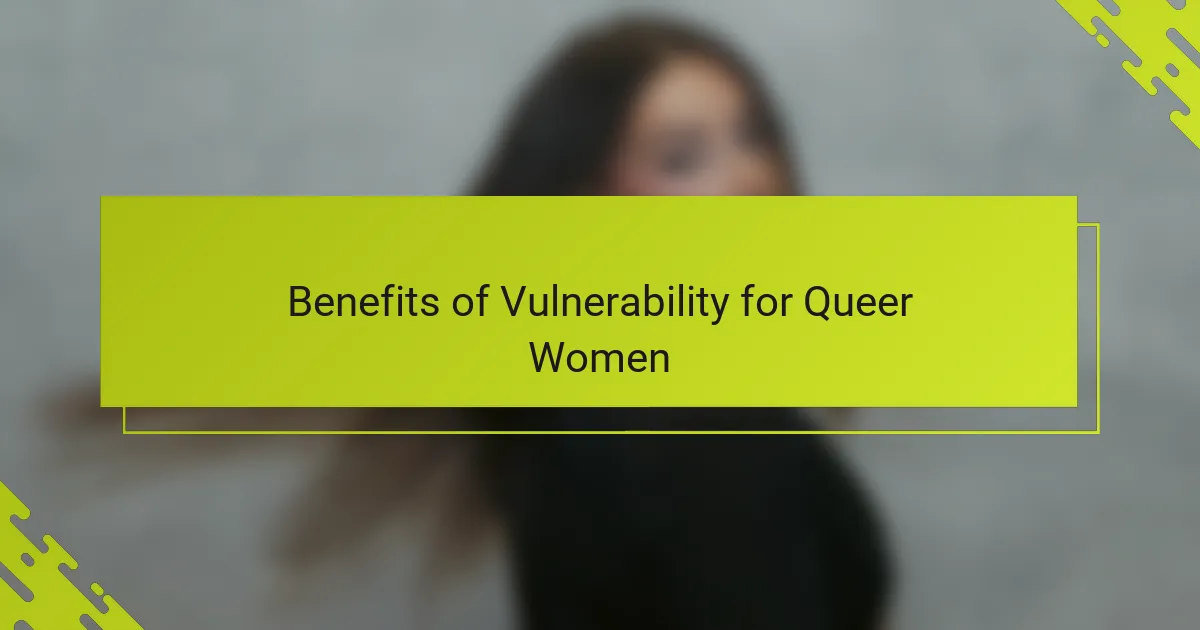
Benefits of Vulnerability for Queer Women
Embracing vulnerability has helped me break down walls I didn’t even realize I’d built around my identity as a queer woman. When I allowed myself to be open about my fears and hopes, I discovered a surprising sense of liberation—like finally breathing after holding my breath for years. Have you ever experienced that moment when sharing something deeply personal actually lightens your emotional load?
I’ve also noticed that vulnerability creates stronger bonds within queer spaces. When I let my guard down, people respond with genuine understanding, not judgment. This mutual openness turns community into a safe harbor where we can heal together, reminding me that vulnerability is less about exposure and more about connection.
But perhaps the most surprising benefit is how vulnerability fuels my own resilience. It’s uncomfortable, yes, but by facing uncertainty head-on, I’ve cultivated courage that feels authentic and grounded. Isn’t it ironic that being vulnerable makes us one of the strongest voices in the conversation?
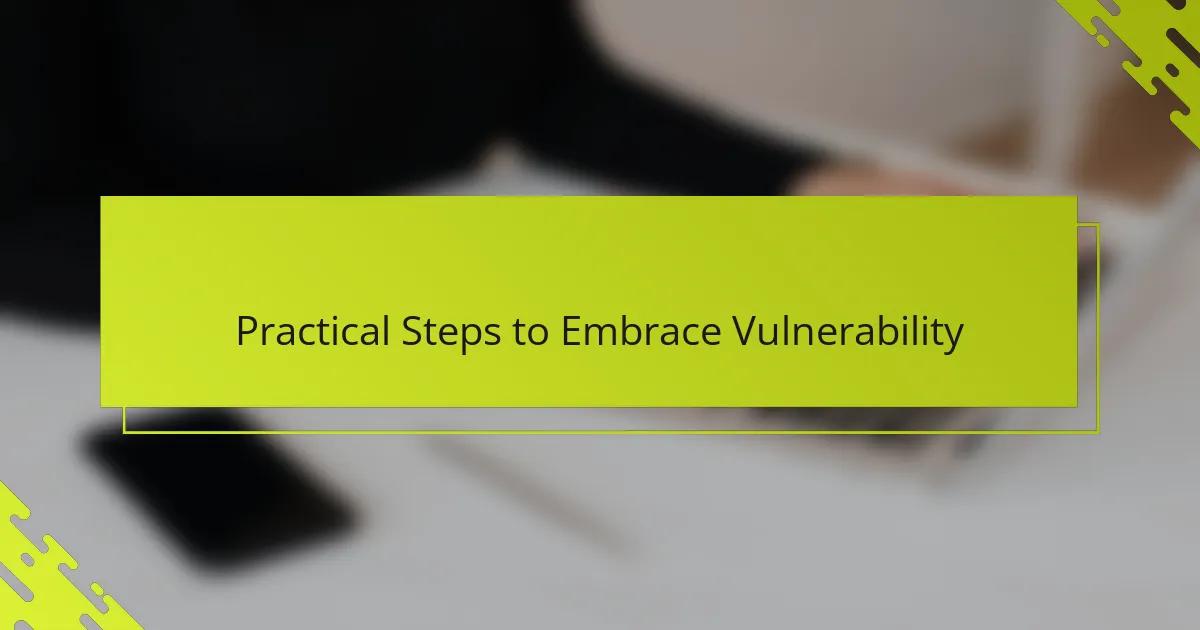
Practical Steps to Embrace Vulnerability
One of the first steps I took was simply naming my fears out loud, even when it felt scary. Saying, “I’m afraid of being misunderstood” was like releasing a little weight I didn’t realize I’d been carrying. Have you ever tried speaking your vulnerability instead of hiding it? That simple act helped me create space for honesty in my relationships.
Another practical move I made was setting small, manageable goals to share more of myself gradually. For example, I started by revealing a tiny truth to a trusted friend before opening up to larger groups. This felt less overwhelming and gave me confidence to continue. I’ve found that vulnerability isn’t a giant leap—it’s a series of small, brave steps.
Finally, I began practicing self-compassion when my vulnerability felt messy or awkward. Brené Brown’s idea that we must “believe we’re enough” resonates deeply with me. When I stumbled or felt exposed, I reminded myself that imperfection is part of the process. How often do we forget to be kind to ourselves during these moments? Embracing that kindness made vulnerability feel less like a risk and more like growth.
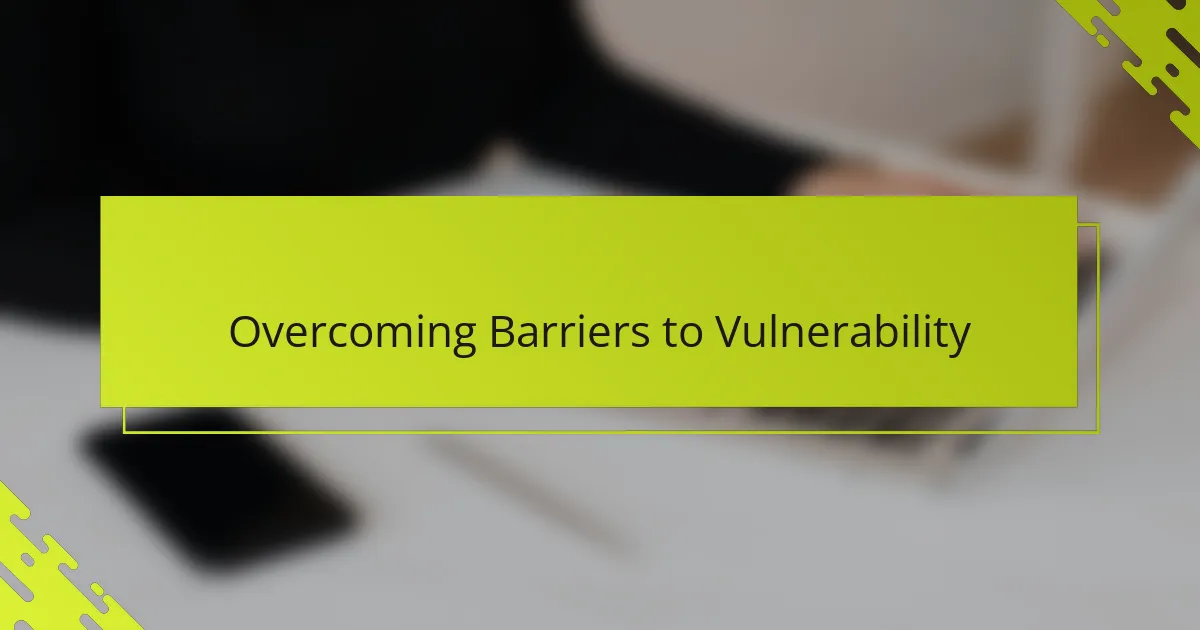
Overcoming Barriers to Vulnerability
Breaking through barriers to vulnerability often meant confronting my own fears head-on. I used to think that showing weakness would make me less worthy, but gradually I realized that these fears were just walls I’d built to protect a fragile heart. Have you ever found yourself trapped behind invisible walls, wondering what it would feel like to step outside and just be seen?
What truly helped me was reinterpreting vulnerability not as exposure, but as courage in action. Each time I allowed myself to be open, even in tiny ways, it chipped away at my shame and self-doubt. I remember the relief I felt after sharing a difficult truth with a close friend—it was like shedding a heavy cloak I didn’t know I was carrying.
Sometimes, the biggest barrier is the fear of rejection from those we care about most. Yet, leaning into that discomfort taught me that authentic connections thrive when we risk honesty. Doesn’t it seem paradoxical that the very thing we’re scared to reveal often becomes our greatest source of belonging?
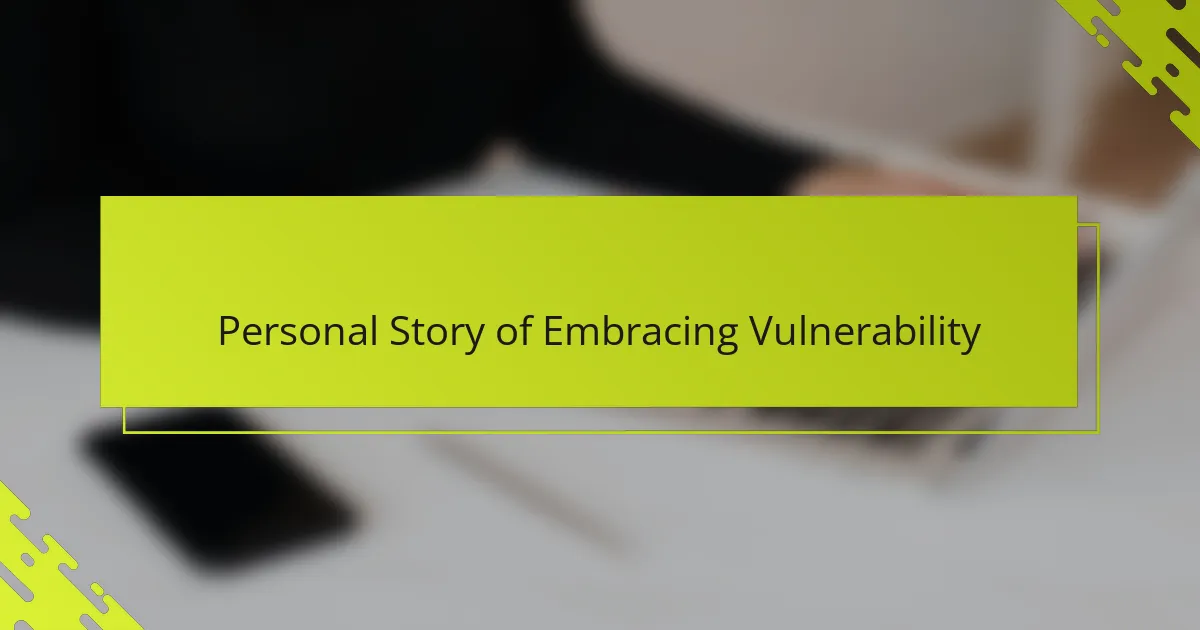
Personal Story of Embracing Vulnerability
There was a moment when I nervously shared a vulnerability I’d long hidden—my fear of not being enough as a queer woman—and to my surprise, the response was compassion, not judgment. That openness felt like stepping into sunlight after years in shadow, a small but powerful step toward owning my story. Have you ever hesitated to reveal a part of yourself only to find that doing so actually brought relief?
Early on, I struggled with the idea that vulnerability meant weakness, especially in spaces where toughness often seemed necessary. But through Brené Brown’s guidance, I started to see vulnerability as the very thing that made me brave, not fragile. I remember thinking, if courage can live in my uncertainty, maybe I can finally stop hiding behind armor I thought kept me safe.
One of the hardest lessons was learning to embrace discomfort without running away. I still recall the ache of sharing my truth in a room full of people, heart pounding, palms sweating. Yet afterward, I felt connected in ways I never expected. Was it fear holding me back, or was it the hope that this moment of vulnerability might just open a door to something real? For me, choosing the latter changed everything.
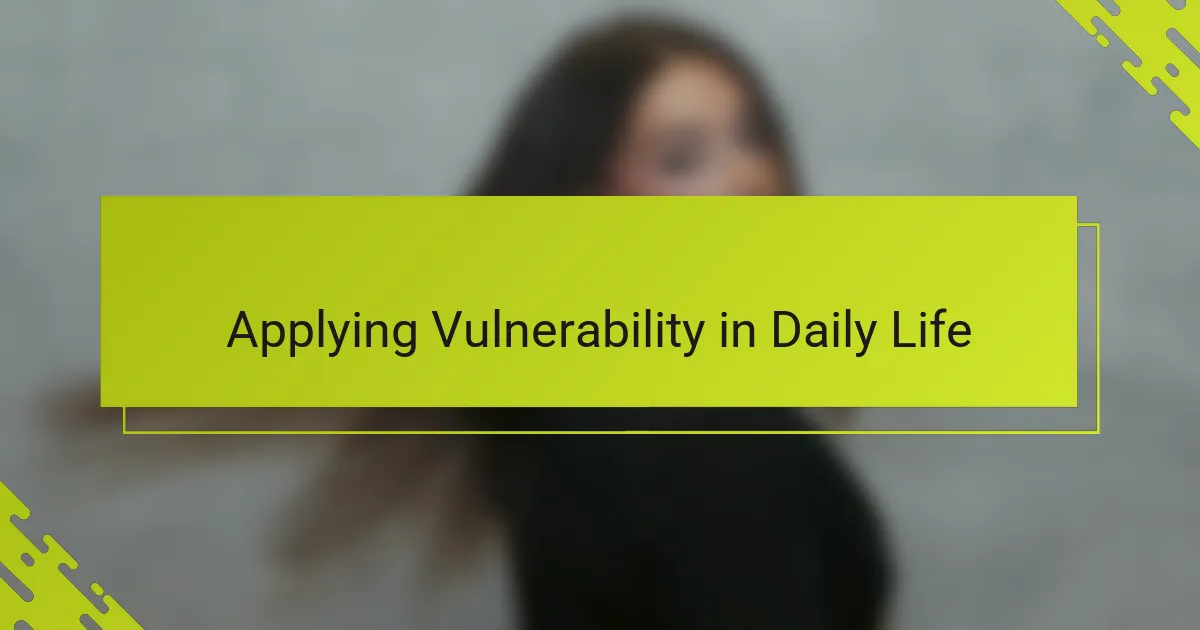
Applying Vulnerability in Daily Life
Applying vulnerability in daily life felt daunting at first, like standing at the edge of a cliff without a clear idea of how I’d land. I remember the first time I chose to say “I’m struggling” to a colleague—it was messy, awkward, but it cracked open a genuine conversation I hadn’t expected. Have you ever felt that hesitation before stepping into honesty, only to find something unexpectedly healing on the other side?
I started small, practicing vulnerability in everyday moments—sharing my uncertainty about a project, admitting when I didn’t have all the answers, or simply expressing how I felt without overthinking the outcome. These little acts didn’t make me weaker; they gradually built a bridge of trust and realness in both personal and professional spaces. Doesn’t it seem like embracing vulnerability daily creates room not just for connection, but for self-understanding too?
Sometimes, vulnerability shows up in the mundane—in asking for help when overwhelmed or saying no to protect my boundaries. I’ve found that when I honor these vulnerable moments, I cultivate resilience and authenticity that feels deeply nourishing. What about you—how do you see vulnerability playing out in your everyday rhythms? For me, it’s become less about grand gestures and more about the courage to be real, moment by moment.
